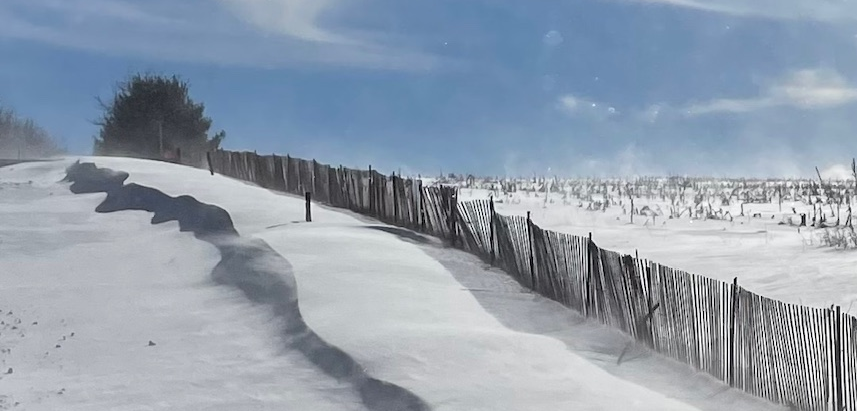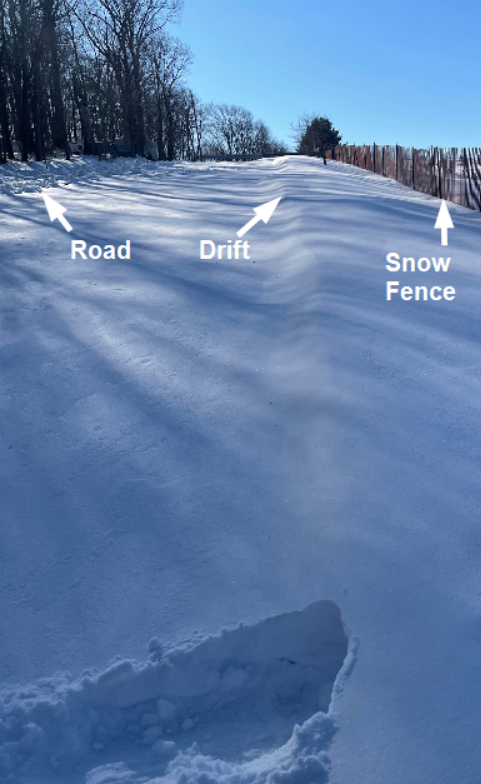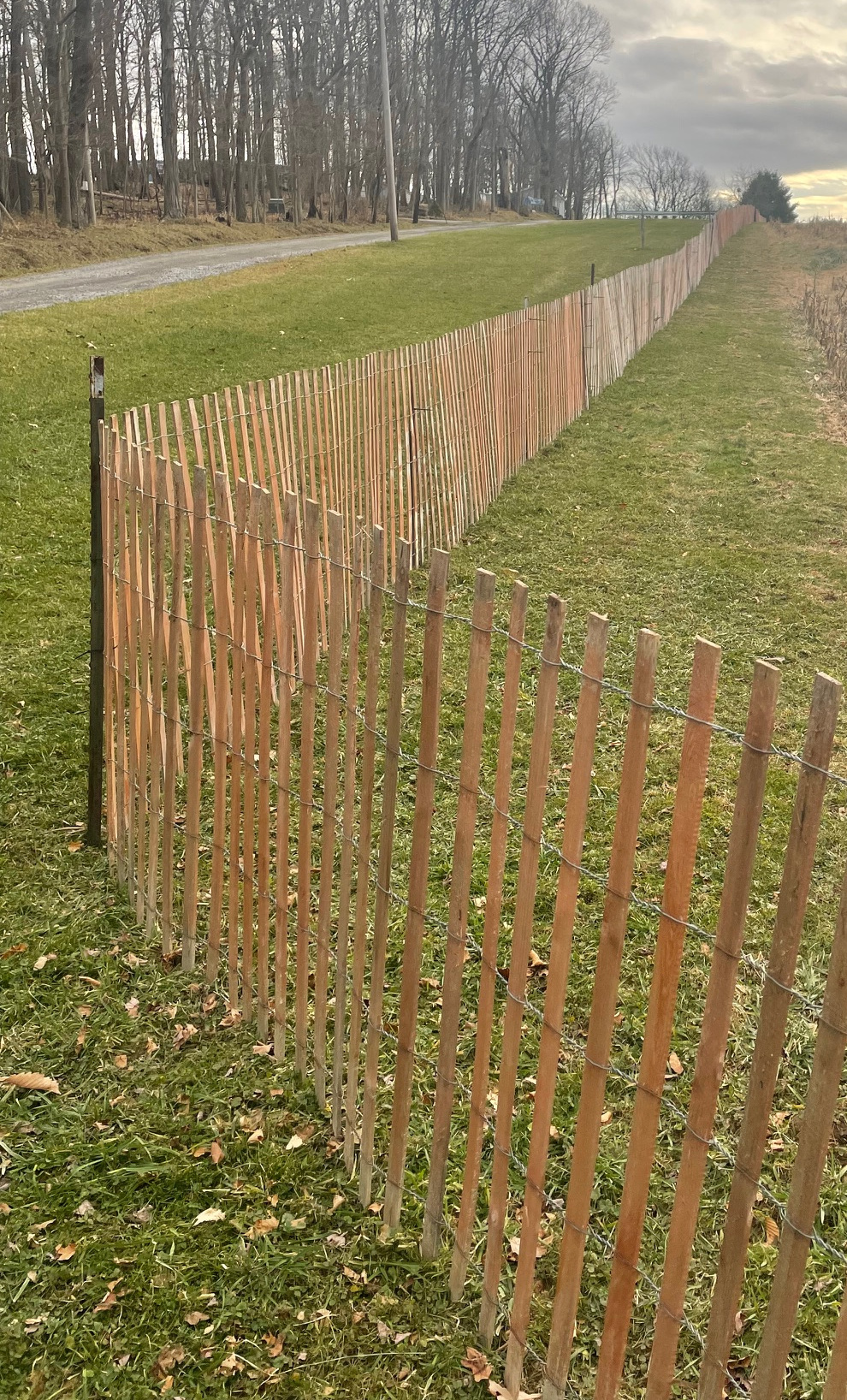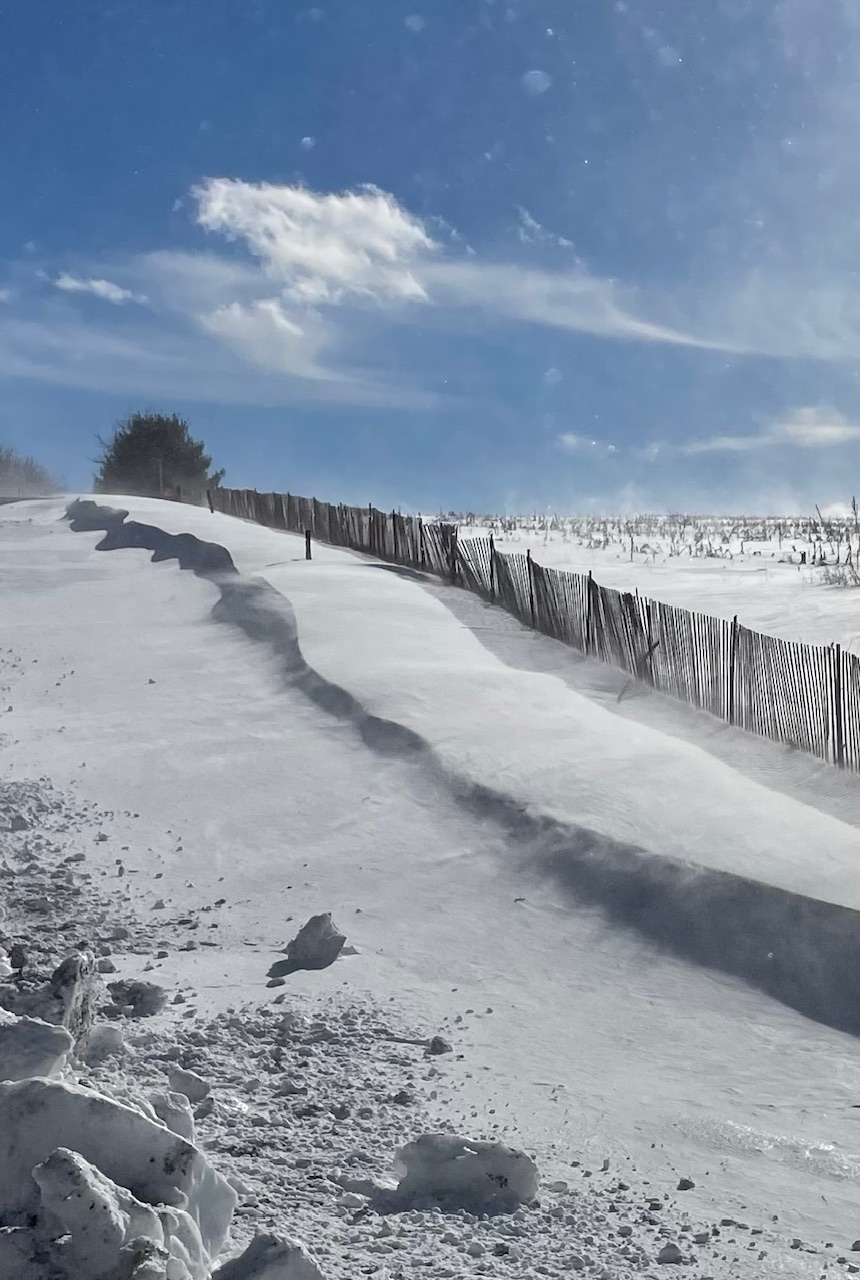Snow Fences Save Time and Trouble

For years, I had to get up before sun up to drive out our lane in the winter to see if I needed to plow snow, even on the nights when there was no new snow!
Why? Because a little wind crossing the fields next to our lane would deposit snow drifts that were 3' or more right on our lane. With time, I knew where these drifts naturally occurred and that's when I decided to buy snow fences, and put them up on a warm and sunny late autumn day. The result? I sleep like a baby and only have to deal with snow when there's a lot of new snow.
The process is pretty simple. You put the snow fence or sand fence in the direction that is up-wind for the prevailing winds. Usually, that to the west in the direction of the sunset. They are pretty easy to put up.
- Establish the line of fence.
- Drive T-posts every 8' to 10'
- Roll out the snow fence and attach them to the posts. Some use the attaching clips. I simply use zip-ties.
A snow fence is a barrier designed to slow down the movement of snow, control drift location by causing the drift down-wind and just behind the fence line (see example below). It's typically installed in areas prone to heavy snowfall, such as along roads, highways, fields, or areas where snowdrifts can cause problems.

Snow fences come in various types, including:
- Wooden Snow Fences: Traditional snow fences were often made of wooden slats or boards woven together to form a porous barrier. These fences allow air to pass through while trapping snow, causing it to accumulate on the windward side, reducing snowdrifts in critical areas.
- Plastic Snow Fences: Modern snow fences are often constructed from plastic materials, such as high-density polyethylene (HDPE). These fences are lightweight, durable, and can be easily installed. They function similarly to wooden snow fences by disrupting wind patterns and causing snow to accumulate.
Snow fences work by disrupting the wind flow, causing it to slow down and drop snow particles on the windward side of the fence. This prevents the snow from drifting across roads, runways, or other critical areas, reducing the need for constant snow removal and improving visibility and safety in affected areas.
The design and placement of snow fences are crucial for their effectiveness. They are typically installed perpendicular to the prevailing wind direction and at a suitable distance from the area they are intended to protect. Properly installed snow fences can significantly reduce snowdrifts, making winter maintenance more manageable and enhancing safety in snow-prone regions.
In the photograph to the upper right, the fence is placed to the right (west) of the road. Prevailing winds from the corn field to the right regularly cause extensive drifts on the road even on hours with no new snow but some wind. The snow fence causes drifts immediately after the fence and not on the road, which you can see in the snowy photo taken in the same location only weeks after the first photo's were taken.
The T-posts were placed with the help of a post driver.
The Snow Fence Price Survey Data is maintained to assist in making rough price estimates for projects, vCalc performs periodic pricing surveys of nationally advertised commodities, in this case, insulation. The pricing came from the website of the Store at the Date specified. This is for rough calculating convenience and local pricing should ALWAYS be used. The Snow Fence Pricing Survey Data information is as follows:
- Date: 12/11/23 at Store: Tractor Supply
- Snow Fence Pricing in U.S. dollars per unit:
- 4' x 50' Plastic Snow Fence Price: $29.95
- 4' x 100' Plastic Snow Fence Price: $33.99
- 4' x 50' Wood Snow Fence Price: $79.99
CAUTION: The pricing information provided is for calculating convenience with NO implied guarantees to the accuracy of the values listed. Authoritative sources should be sought to confirm any value before risking health or wealth on the veracity of the data. Furthermore, Calc gives no guarantee that you will be able to buy products at listed prices or even if they will be available. The data provided is purely a convenience for making estimates, so we strongly recommend that one ALWAYS use local pricing and authoritative specifications.
To help estimate the amount of snow fencing needed and estimate snow fence cost, vCalc has the Snow Fence Calculator.
The Snow Fence Calculator have function to compute the number of rolls of snow fence and the number of posts needed. They also includes estimated cost of materials for both rolls (plastic and wood) and T Posts. The Snow Fence Calculator functions are:
- Snow Fence Rolls Calculator: This compute the number of rolls of snow fence are needed for a fence line. It includes a cost estimate for the total number of snow fence rolls needed.
- T Posts for Fence Line: This computes the number of T Posts needed for a snow fence. It includes a cost estimate.
The most common snow fences are either wood with slats or plastic with large regular holes. In both cases, the wind needs to go through the fence or it will act as a sail and the fence will be more prone to be blown over due to horizontal stress. Since there is less horizontal stress, snow fence can be erected using T Posts. T Posts are made of steel, while one or two are easily carried, several can be too heavy to carry.
are either wood with slats or plastic with large regular holes. In both cases, the wind needs to go through the fence or it will act as a sail and the fence will be more prone to be blown over due to horizontal stress. Since there is less horizontal stress, snow fence can be erected using T Posts. T Posts are made of steel, while one or two are easily carried, several can be too heavy to carry.
T Post Weight:
- 66" (5'6") Post = 7 pounds
- 72" (6') Post = 7.5 pounds
- 84" (7') Post = 8.75 pounds
- 96" (8') Post = 10 pounds
T Posts are easy to drive into soft (not frozen) ground using a post driver. Post drivers are a great investment if one is driving T Posts or U-channel posts in the ground. Post drivers do less damage to the posts, create fewer sharp edges, drive the posts MUCH QUICKER that even a sledge hammer and they are less likely to injure you.
A wood snow fence can be heavy too. A 50' x 4' wood snow fence roll can weigh up to 80 pounds.
- Comments
- Attachments
No comments |

